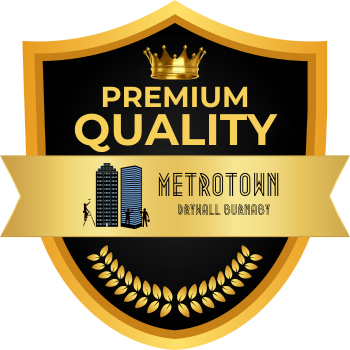Professional Drywall Smoke & Fire Repair Services in Burnaby, BC


Fire and smoke can leave lasting damage beyond what’s visible on your walls. From soot penetration and odor absorption to compromised drywall integrity, proper restoration requires specialized expertise. At Metrotown Drywall Burnaby, we provide comprehensive smoke and fire drywall repair services that restore your home or business to safe, pre-damage condition.
Our skilled contractors address both the seen and unseen effects of fire damage—cleaning soot, neutralizing odors, and replacing weakened drywall with fire-rated materials for enhanced safety. Every project begins with a thorough inspection to determine which sections can be salvaged and which require full replacement, ensuring complete structural and aesthetic restoration.
Whether you’re dealing with minor smoke stains or extensive fire damage, Metrotown Drywall Burnaby delivers professional drywall remediation, refinishing, and fire-resistant installations that meet safety codes and exceed expectations.
Call (604)-330-8736 today for expert smoke and fire
drywall repair services across Burnaby and surrounding areas.
Comprehensive Smoke and Fire Drywall Repair Services in Burnaby
Professional smoke and fire damage remediation requires specialized techniques to eliminate odors, remove soot contamination, and restore wall and ceiling surfaces to their original condition. Metrotown Drywall Burnaby provides complete restoration solutions that address both visible damage and hidden contamination issues.
Smoke Damage Cleanup and Odor Removal
Smoke damage penetrates deep into drywall surfaces, creating persistent odor problems that standard cleaning cannot resolve. Your walls absorb smoke particles and chemical residues that continue releasing unpleasant smells long after the fire.
Professional drywall experts use specialized primers and sealers designed to encapsulate smoke odors permanently. These products create an impermeable barrier that prevents odor molecules from escaping through the surface.
Key smoke damage indicators include:
- Discoloration on walls and ceilings
- Persistent smoky odors
- Yellow or brown staining
- Greasy residue on surfaces
The cleanup process involves removing damaged drywall sections that cannot be properly sealed. Your drywall repair service will assess which areas require complete replacement versus surface treatment.
Thermal fogging techniques neutralize airborne odor particles in wall cavities before new drywall installation begins.
Fire Damage Restoration Process
Fire damage restoration follows a systematic approach to ensure complete remediation of affected drywall surfaces. Your restoration begins with thorough damage assessment to determine salvageable materials.
Water damage from firefighting efforts often compounds the original fire damage. Moisture meters detect hidden water infiltration behind walls that could lead to mold growth if not properly addressed.
The restoration sequence includes:
- Structural assessment - Evaluating wall integrity
- Contamination removal - Eliminating soot and debris
- Moisture extraction - Drying wet materials
- Surface preparation - Cleaning salvageable areas
- Replacement installation - Installing new drywall sections
Heat-damaged drywall loses structural integrity even when not visibly burned. Your drywall contractors test material strength to identify compromise areas requiring replacement rather than repair.
Fire-resistant drywall installation provides enhanced protection for restored areas.
Soot Removal from Walls and Ceilings
Soot particles create acidic residues that continue damaging drywall surfaces after initial fire exposure. Your walls require immediate attention to prevent permanent staining and material degradation.
Dry soot removal techniques prevent particles from spreading to uncontaminated areas. HEPA vacuums with specialized attachments lift surface deposits without pressing them deeper into the material.
Chemical soot removers dissolve stubborn residues that mechanical cleaning cannot eliminate. Your drywall repair experts select appropriate cleaning agents based on soot composition and surface materials.
Soot removal challenges:
- Protein soot - Requires enzyme-based cleaners
- Synthetic soot - Needs solvent-based removal
- Natural soot - Responds to alkaline solutions
Ceiling soot removal requires scaffolding and protective equipment to safely access overhead surfaces. Gravity causes soot particles to settle in ceiling texture patterns where standard cleaning proves ineffective.
Drywall Odor Removal Techniques
Persistent odors in drywall require comprehensive treatment beyond surface cleaning. Your odor removal process must address contamination at the molecular level within the gypsum core.
Ozone treatment neutralizes organic odor compounds embedded in porous drywall materials. Controlled ozone exposure breaks down odor molecules without damaging the underlying structure.
Advanced odor removal methods:
- Hydroxyl generators - Safe for occupied spaces
- Thermal deodorization - Heat-activated odor elimination
- Encapsulation primers - Permanent odor sealing
- Activated carbon filters - Air purification during treatment
Surface preparation includes light sanding to open porous areas for better primer penetration. Your drywall surface preparation removes the outer contaminated layer while preserving structural integrity.
Multiple primer coats ensure complete odor encapsulation before final finishing begins.
Drywall Restoration and Replacement Solutions
Fire and smoke damage requires comprehensive drywall restoration techniques, from complete section replacement to targeted patching and surface refinishing. Professional restoration addresses structural integrity, odor elimination, and aesthetic restoration through systematic repair processes.
Drywall Replacement for Fire-Damaged Areas
Severely fire-damaged drywall sections require complete removal and replacement to ensure structural safety and eliminate embedded smoke odors. Heat exposure can compromise the gypsum core's integrity, making replacement the only viable option.
Professional contractors assess damage depth by examining discoloration patterns and testing material stability. Direct flame contact typically necessitates full replacement, while heat-affected areas may only require surface treatment.
The replacement process involves:
- Cutting damaged sections along stud lines
- Installing new fire-resistant drywall panels
- Applying joint compound and tape
- Priming with odor-blocking sealers
New installations use fire-resistant drywall in areas prone to heat exposure. This specialized material contains glass fibers and other additives that enhance fire resistance beyond standard gypsum board capabilities.
Drywall Patching and Hole Repair
Hole repair addresses punctures, cracks, and small damaged areas without requiring full panel replacement. Fire damage often creates localized holes from falling debris or structural shifts during the incident.
Small holes under 4 inches typically use mesh patches or plug repairs. Larger openings require backing material installation before applying compound layers.
The patching sequence includes:
- Cleaning debris from hole edges
- Installing appropriate backing material
- Applying base coat compound
- Feathering edges for smooth transitions
- Sanding between coats
Professional drywall repair services ensure patches match surrounding textures and thickness. Multiple compound applications create seamless repairs that disappear after final finishing.
Drywall Surface Preparation and Sanding
Drywall sanding removes soot residue, damaged surface layers, and prepares substrates for refinishing treatments. Surface preparation determines the quality and longevity of restoration results.
Soot penetration varies based on exposure duration and heat intensity. Light deposits may sand away easily, while deep penetration requires aggressive removal techniques.
Surface preparation steps include:
- Dry sanding loose soot and debris
- Wet sanding stubborn residues
- Chemical cleaning for odor removal
- Primer application with odor-blocking properties
Professional contractors use specialized sanders with dust collection systems to prevent contamination spread. HEPA filtration captures fine particles during the sanding process.
Proper preparation creates clean, stable surfaces for paint and texture application.
Ceiling and Wall Repair After Fire
Ceiling repair presents unique challenges due to gravity effects on joint compound and potential structural compromises from heat exposure. Water damage from firefighting efforts compounds restoration complexity.
Wall repair focuses on vertical surface restoration, addressing both cosmetic and structural concerns. Heat rises during fires, often causing more severe ceiling damage than wall surfaces.
Repair priorities include:
- Structural assessment of framing members
- Moisture removal from firefighting water
- Joint compound application in multiple coats
- Texture matching to existing patterns
Drywall finishing requires precise technique matching for seamless integration with undamaged areas. Professional drywall restoration ensures consistent appearance across repaired and original surfaces.
Specialized tools create various texture patterns, from smooth finishes to complex decorative treatments.
drywall repair services